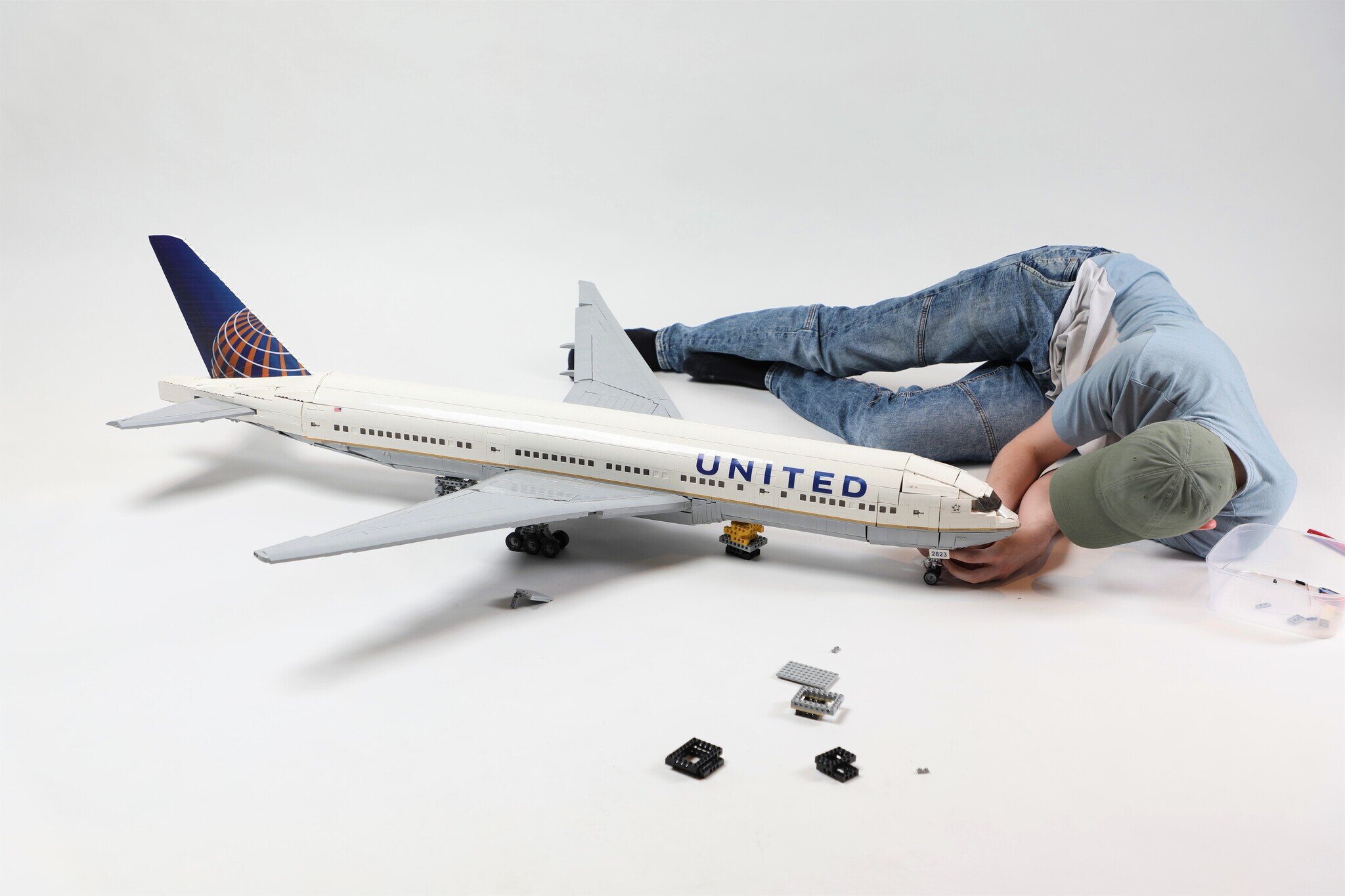Flying the Friendly Skies: A LEGO Plane with 10,000 Parts
/Best of BrickNerd: Weekend Highlight — Article originally published August 11, 2021.
Though most of us can’t travel yet because of the state of the world, this incredible creation from LEGO builder Freezeur21 makes us want to fly! His latest MOC, a United Airlines Boeing 777, is massive and reaches 155x160cm approximately (that’s more than 5 feet in both directions). The piece count also cruises into first-class with around 10,000 pieces.
It's been a wild ride for Freezeur21. While the actual build took 11 months, the story started much earlier. He’s been brainstorming techniques and tinkering since the fall 2019 and really started building in November 2019—he “finished” in October 2020.
After that he still had some things to work out and was looking for a way to take pictures with a white background which took a bit more time during COVID, so all in all, this plane took about two years to get off the ground.
I talked with the builder about his plane and asked a few interesting questions.
Sam: Hello Freezeur21! What a great achievement! Did you encounter any particular difficulties while making this plane?
Freezeur21: Hello Sam! It’s the MOC on which I’ve worked the most in terms of technique, and which was therefore the hardest for me to make. I worked to make sure there were as few “illegal” techniques as possible. I checked, more or less as I built, that what I was doing corresponded to “legal” (aka stress-free) techniques, by trying to reproduce the parts I was wondering about on the LEGO Digital Designer.
The two biggest challenges were 1) to make the wings (and the whole rear) fit in “suspension.”
And 2) to make everything fit on three very small landing gears compared to the whole.
Sam: Were you inspired by other MOCs for this plane?
Freezeur21: You may be familiar with the MOCer BigPlanes who builds large aircraft MOCs. The guy is (positively) insane—he’s one of the MOCers who blows me away the most. His builds have been a huge source of inspiration, and I owe him a debt of gratitude. I did it my way and don’t understand all his techniques anyway, but seeing his builds gave me the proof that it was possible to build a plane like that, proof without which I probably wouldn't have started this whole project.
Sam: You use custom stickers on the plane, which is always a big discussion in the community regarding stickers (see Pedro’s article previously on BrickNerd). How did you manage that?
Freezeur21: For the first time, I used some stickers exceptionally. For me I usually think, if they are official LEGO stickers, why not? But otherwise, I don’t like to use them for an original creation. I think it's almost too easy because then you can put any pattern you want too easily—and some builders abuse it quickly. I also think that it distorts LEGO a lot. But here it was almost out of the question to build this without stickers at all because the pattern on the tail in particular is impossible to reproduce properly with LEGO, especially on such a thin surface.
Sam: The stickers do give the plane a sense of realism. I assume that is the same for the writing on the side of the plane?
Freezeur21: Same for the “United.” It’s feasible to “write” it just with LEGO, but it needed to be done properly on a cylindrical fuselage and not a flat surface. And I absolutely wanted to reproduce a plane of this type and this company. Anyway, without stickers, it would have looked very ugly. So from the beginning, I knew I was going to use stickers—and since I’m really happy with the result, I have no qualms about it.
But it’s still an exception. And I used as little as possible. Too many stickers really breaks everything. For example, I dropped the ones I had put for a while to frame the doors (they are already independent from the rest of the fuselage but it was to mark their contours even more) and the ones to divide the cockpit window into six segments like on a real Boeing 777.
Sam: Can minifigs get a ticket and fly on your plane?
Freezeur21: I voluntarily left the interior of the plane empty under the white part, above the golden line to be fitted out—and the roof can be removed. So it’s not impossible that I fill the interior with seats, minifigs and so on. We’ll see about that in the future.
Sam: Can you share a WIP picture for BrickNerd readers? We love getting to look at the inside and learning how something was built.
Freezeur21: Of course! Here’s a cross-section and my worktable.
Sam: Thank you Freezeur21! Time for me to fly to other horizons.
Do you like to build planes? How big was your largest LEGO plane? Leave your thoughts in the comments below.
Do you want to help BrickNerd continue publishing articles like this one? Become a top patron like Charlie Stephens, Marc & Liz Puleo, Paige Mueller, Rob Klingberg from Brickstuff, John & Joshua Hanlon from Beyond the Brick, Megan Lum, and Andy Price to show your support, get early access, exclusive swag and more.

























